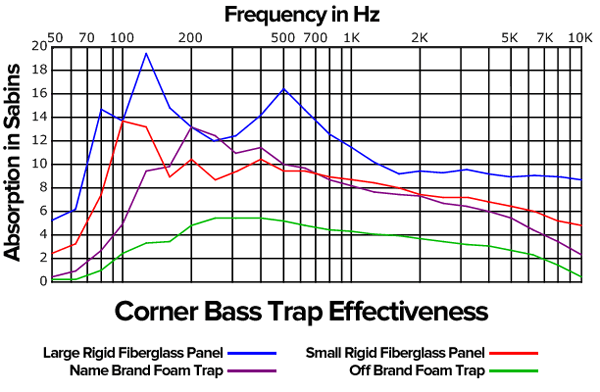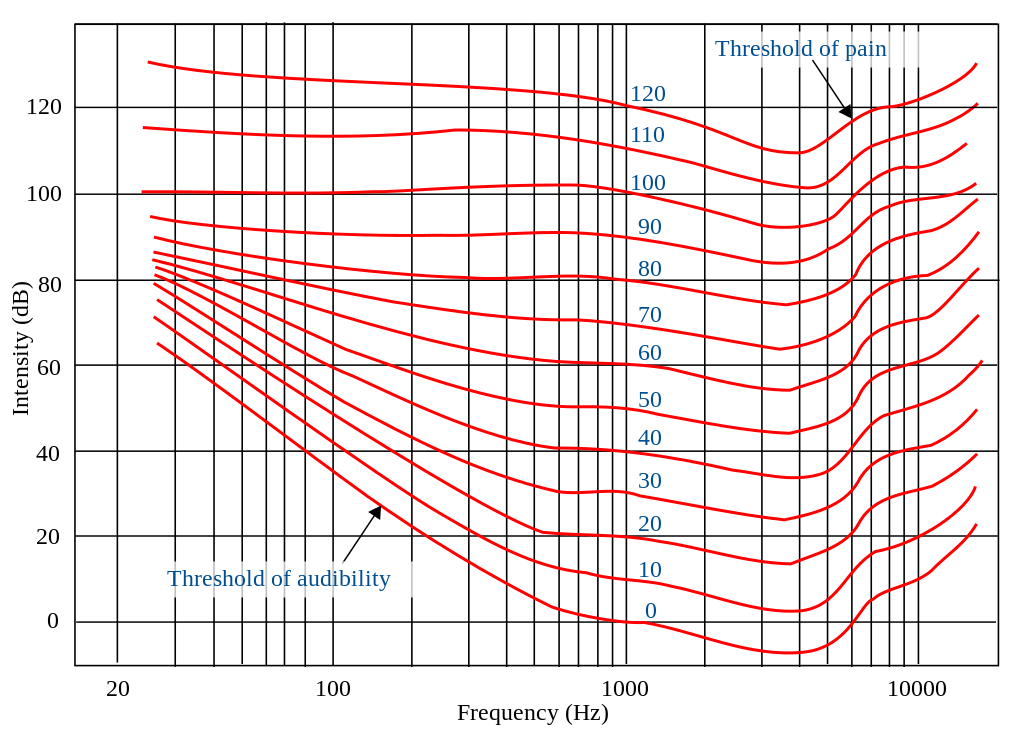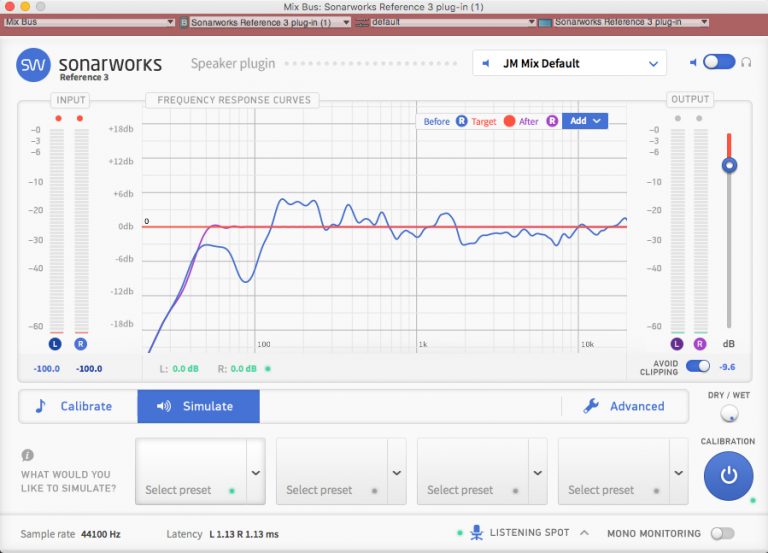7 Acoustics Myths That Are Quietly Sabotaging Your Mixes
Room acoustics can be a pain in the you-know-what.
You’ve got to pay attention to them if you want your mixes to sound great. But taming them often seems like a black art.
Sure—there’s lots of information about acoustics scattered across the internet. But most of it is misguided, impractical, or…well…boring.
Armchair engineers on audio forums pose as experts. Acoustic treatment manufacturers post articles, but they’re also trying to sell products. And hiring an acoustician can cost thousands.
How do you know who and what to listen to?
Fortunately, you don’t need a physics degree to build a great-sounding studio. You don’t need to spend thousands either. Often, the first step and most important step is to simply clear up some common misconceptions.
Read on as we debunk 7 pervasive acoustics myths. Avoid them and you’ll be well-equipped to build a great-sounding studio or mix room with ease.
Myth #1: Turning down your speakers will minimize the effects of room acoustics
A Grammy-winning mixer was recently telling me about a studio he had just finished building. After running through the gear list, he proudly proclaimed:
“Want to know the best part? Since I monitor so quietly, I don’t need any acoustic treatment. The room doesn’t get in the way.”
Eh…not quite.
Listening volume has no impact on room acoustics. The ratio between the direct sound (what travels straight from the speakers to your ears) and the reflections (the sound that hits your ears after bouncing off one or more walls) doesn’t change at different volumes. If you think you can solve acoustic problems by turning your speakers down, you’re fooling yourself.
Perhaps one reason this belief is so pervasive is because our perception of sound does change at different volumes. In the 1930’s, Harvey Fletcher and Wilden Munson discovered that at low levels, our ears are less sensitive to low and high frequencies. This means we hear less low end when we turn our speakers down. Since most acoustic problems are in the low end, we might think our room sounds better at lower volumes. In reality however, the problems are still there. We’re just not hearing them quite as well.
Myth #2: Foam is an effective bass trap
Foam bass traps are cheaper than competing products. Many engineers think they offer equal bang for the buck.
The truth couldn’t be more the opposite.
In order to absorb low end, you need mass. There’s no way around it. This is why proper bass traps are thick, heavy, and take up a ton of space. While foam can be effective at absorbing mid-to-high frequencies, it does little-to-no good in the low end, where the majority of acoustic problems lie.
For illustration, here’s a graph comparing the effectiveness of a foam bass trap to a fiberglass alternative:

This image from the Ledger Note website draws on data and research commissioned by RealTraps. Used with permission.
Avoid foam bass traps. They’ll do little more than take up space. Instead, look for ones made of rigid fiberglass or Rockwool. These will be much more effective.
Myth #3: If your mixes don’t translate, acoustic treatment should be your first step
Want to know a secret? Most of the time, acoustic treatment isn’t the best place to start.
If you’ve ever done any recording, you know that moving a microphone a few inches can dramatically change the sound. Speakers work the same way.
Your first step should always be to find the right spot for your speakers and sweet spot in your room.
Do this before investing in acoustic treatment or new monitors, as it can often make a huge impact. Why try to a fix an acoustic problem with treatment if you can solve much of it by simply moving your monitors?
Get placement right, and the rest will be gravy.
To help, I’ve put together a video with 7 simple tips to help you optimize the placement of your speakers and sweet spot. To download it, click the link below:
Myth #4: Room correction software will fix everything
Over the last few years, a number of software-based solutions have emerged to combat acoustic problems. Most of them use a microphone and EQ to measure and flatten the frequency response of your room.
Many engineers hope these tools will solve all of their acoustic problems. Unfortunately, not quite.
While room correction software can offer some benefits, there are many things it just can’t do. Even the best EQ setting can’t fix modal ringing—a problem that occurs when certain frequencies ring out in a room longer than others. While it can help, it can only correct the frequency response of a small sweet spot in the room. These corrections can even make other areas in the room sound worse.
Acousticians like Ethan Winer are against room correction software. Others, like Bob Hodas, use EQ as a core part of their room tuning process. With the jury split, I’ve done extensive testing to come up with my own conclusions.
I’ve tried many room correction solutions, including KRK’s ERGO, IK Multimedia’s ARC 2, and Sonarworks Reference 3. I now use Reference 3 every day, and it’s made significant improvements to my listening environment. However, I find it works best as the cherry on top of a room that already sounds great. It’s not a substitute for acoustic treatment or proper speaker and sweet spot placement. If you’re looking for a quick fix, you’re not likely to find it here. There’s simply no way around acoustics.
Myth #5: Deader is better
When it comes to acoustic treatment, many say that more is better.
While it’s true that adding bass traps will often improve a room, the caveat is to keep an eye on high frequency absorption. Adding too much acoustic treatment can over-dampen the high end of a room.
As with most things in audio, balance is key. Aim for an even reverb time across the frequency spectrum. Too much treatment can make a room sound boxy and lifeless and lead to a low end that rings out much longer than the high end. A room like this is no fun to work in.
Myth #6: Egg crates, rugs, and carpet make effective acoustic treatment
There are all sorts of poor man’s alternatives to proper acoustic treatment. Most of them don’t work.
The most famous of these are egg crates. To the untrained eye, the surface of an egg crate can look similar to the diffusers used in multi-million dollar studios. Perhaps they can do the job just as well?
Not even close.
Egg crates are a far cry from the carefully crafted diffusors that adorn top-tier studios. They not only look bad, but are completely ineffective. Save them for the eggs.
The same thing goes for rugs and carpet: While they may absorb high end, they are completely useless at lower frequencies. Because of this, loading your room up with rugs or putting carpet on the walls will often make it sound worse.
Stay away from these homegrown, cheap-fix solutions. This doesn’t mean you need to spend a ton of money to get things right. If you’re on a budget, I recommend building your own bass traps. Just make sure you use the right materials.
Myth #7: Your room needs to be “flat” to make great mixes
Ever seen a frequency response plot of a typical control room?
You’d be shocked.
No room is flat. Far from it. Even the best, purpose-built studios have significant peaks and valleys.
You don’t need a flat room to make great mixes. In fact, this might not even be what you want. Take it from Bob Hodas:
“Many audio professionals assume, not unreasonably, that the whole purpose of room tuning, whether acoustically or through EQ, is to make the room ‘flat.’ In fact, I have yet to find an engineer or studio owner who actually wanted a ‘flat’ room. Experience shows that a flat room has no personality and is no fun to work in. Equally important, working in a flat room does not necessarily ensure a recording that sounds good elsewhere.”
Don’t obsess over achieving a razor-flat room. Instead, focus on learning the unique frequency response of your space—warts and all. If you know what your room sounds like, you can absolutely craft great mixes—even in a less-than-ideal listening environment.
Taking It Further: 7 Steps To Optimize Your Listening Environment
I hope this article cleared up some misconceptions and replaced them with some acoustics truth. If you avoid these 7 myths, you’ll be more informed than most engineers. You’ll also save time, money, and a ton of frustration!
If you’re ready to put this advice into practice, I’ve put together a video with 7 simple tips to help you optimize the placement of your speakers and sweet spot. These tips will improve the accuracy of your listening environment, so you can craft mixes that sound better on other speakers. To download it, click the link below:
 Before you go—which of these acoustics myths did you believe to be true? Let me know by leaving a comment below.
Before you go—which of these acoustics myths did you believe to be true? Let me know by leaving a comment below.
Jason Moss is an LA-based mixer and educator. Learn how to craft a clear, balanced low end by downloading these free excerpts from his premium training course, Mixing Low End.
10 Comments on 7 Acoustics Myths That Are Quietly Sabotaging Your Mixes
1Pingbacks & Trackbacks on 7 Acoustics Myths That Are Quietly Sabotaging Your Mixes
-
[…] 1 | 2 | Single […]









ntnsystems
March 9, 2017 at 4:32 pm (8 years ago)Regarding #1, I would argue that because materials around the listening position have a specific amount of acoustic energy they can absorb (i.e. not reflect back to the listener) you could expect that at lower volumes a larger percentage the total energy would be absorbed as compared to louder volumes. For a very simplistic illustration, let’s say a couch behind you is capable of absorbing 50dB of 150Hz (unrealistic), and your quiet listening volume is 50dB. You would be potentially hearing 0dB of reflections at 150Hz, whereas listening at 70dB could yield 20dB of reflections. This example is obviously not realistic at all, but I hope it is logical enough to follow.
Your Grammy-winning artist mentioned no acoustic treatment, but I am sure the ambient absorption of the materials that make up the room and objects near the listener would offer some absorption and reduce reflections. The question is to what level you would need to reduce the volume to have those frequencies mostly absorbed.
Justin C.
March 19, 2017 at 11:00 am (8 years ago)That is some good extra context, thanks. It is plausible that, at low enough levels, the very small amount of absorbing that very poor absorbers do could make for *some* discernible impact.
But those levels would likely have to be really, really, really low for the generally non-absorpotive materials in an untreated room to make any difference.
That said, it would be interesting to see some data testing this! However, collecting that data would probably cost more in time and opportunity cost than just buying or building a couple of decent absorbers would, so it might be a bit of a comparative loss to do so! 🙂
My guess is that you’d have to listen at nearly inaudible levels for their to be much effect at the midrange, and you’d have to turn the volume off completely to stop hearing resonance in the low end, which is what really matters to most of us and is hardest to fix.
Andi Picker
March 30, 2017 at 2:17 pm (8 years ago)Yup – sit far enough away from any source and you can’t hear it; sit anywhere relative to a source and you can turn down the level until you can’t hear it. So – there has to be a combination of level and distance from a boundary in any room where you will hear the direct sound, but not the reflected sound. Those conditions may be unusefuly extreme – but they’re there.
Rich Aitken
July 13, 2017 at 1:31 pm (8 years ago)Doesn’t stop the standing waves at all – and those are the bigger problem.
Cole Gentles
March 13, 2017 at 1:23 pm (8 years ago)Hi Jason. I’m curious, in reference to Myth #4, have you tried and reviewed the Trinnov ST2 Pro Optimizer? It’s a beast as far as money goes (4k!), but it runs on its own processor, and I was able to have a listen at a friend’s place a couple of weeks ago and the difference in sound it made was, to me, mind-numbingly dramatic.
David King
March 15, 2017 at 5:38 pm (8 years ago)Couldnt agree more with this, I have just bought a ST2 and it is staggering!!!
Again, this is definitely the cherry on top once you have done everything you can with alignments and bass trapping etc..
EVERYTHING is better, can’t gush enough over this!
Justin C.
March 19, 2017 at 10:53 am (8 years ago)Room EQ can definitely be helpful and I know Jason uses it himself (Sonarworks) but I have to agree that as great as it can be, it can only help significantly in any one given spot in a room. But in that spot, it can help a LOT.
If you get a wide sweetspot first through acoustic treatment, and then add on some tuning, you may wind up in mixing heaven. But if you just give yourself a really great narrow sweetspot with room EQ that falls apart when you move your head 6″ to the left, you’re going to be a world of pain!
Will definitely check out the Trinnov though. I don’t think we have a review of it yet.
Hank Linderman
March 27, 2017 at 12:16 am (8 years ago)I own the Trinnov D-Mon 4, the updated version of the Trinnov Optimizer that integrates with Icons and Avid S series controllers. It corrects for things room treatment can’t fix, most notably phase distortion. You can even set up multiple sweet spots and switch between them depending on where you want to monitor, or combine them into a much wider area, with user selectable weighting. This isn’t ideal for critical mixing, but it can be helpful when a client is in the room. It is indeed spectacular.
randolphr
July 17, 2017 at 5:36 pm (8 years ago)What’s the word on BBC diffusors ?